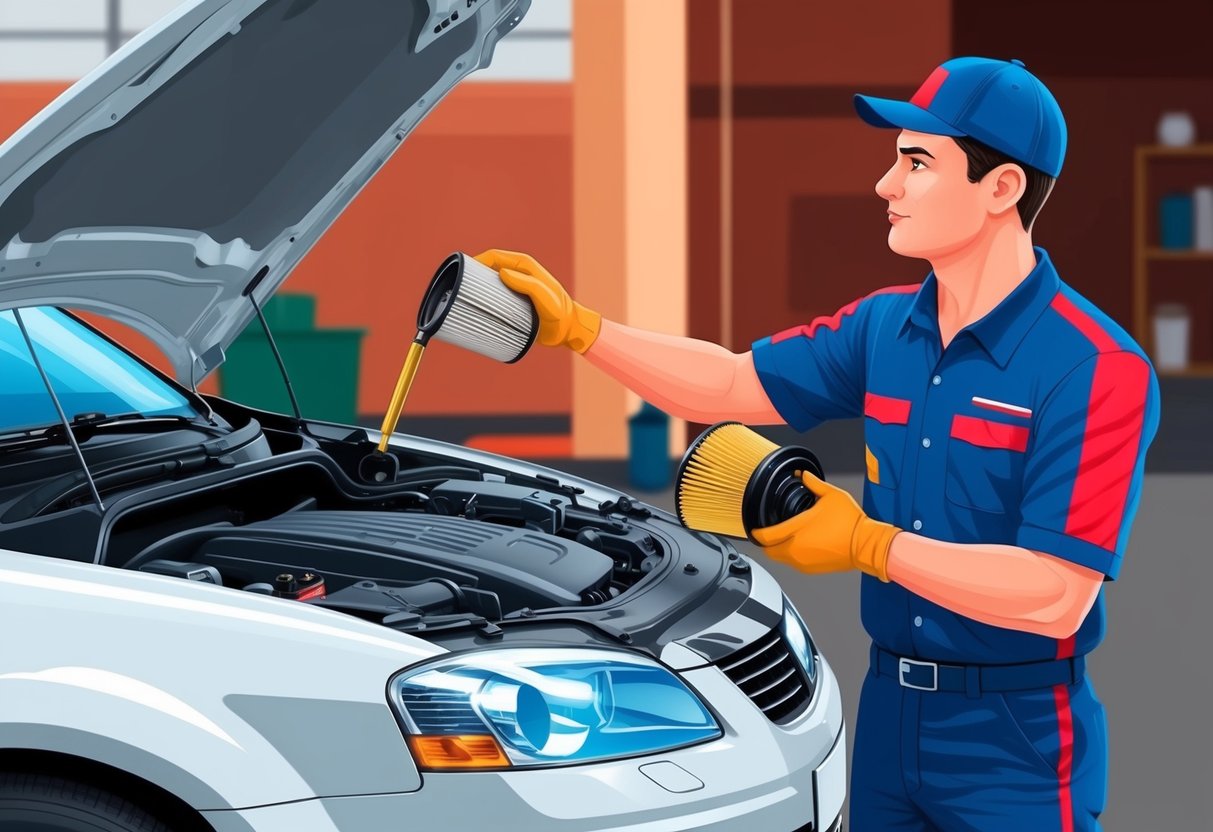
Fluid Levels to Monitor for Optimal Performance
Proper car maintenance includes consistently monitoring several vital fluid levels. Keeping these fluids in check reduces wear on components, improves safety, and prevents costly repairs.
Checking Engine Coolant
Engine coolant is crucial in regulating the temperature of an engine and protecting it against overheating and corrosion. The cooling system should always be filled to the recommended level marked on the reservoir tank.
Low coolant can lead to engine overheating, which may result in extensive damage and expensive repairs. To safely check coolant, wait until the engine is completely cooled down.
Open the hood and locate the coolant reservoir, which usually has markings indicating “Min” and “Max” levels. Always use the correct type of coolant recommended in the vehicle’s owner manual, as using the wrong mixture can reduce performance.
Regularly inspecting for leaks, especially around hoses and the radiator, ensures the cooling system functions efficiently. For more information, see this guide on fluid checks.
Inspecting Brake and Transmission Fluids
Brake fluid is essential for safe braking performance and should be clear or slightly yellowish. Regular brake inspections help detect low or contaminated fluid which can compromise braking power.
Check the reservoir under the hood, ensuring the fluid is at the recommended level and free of debris. If the fluid appears dark or has particles, it should be replaced promptly.
Transmission fluid serves as a lubricant and coolant for the gearbox. Most vehicles have a dipstick to check level and condition; the fluid should be at the proper mark and have a pinkish-red color.
If the fluid is brown or smells burnt, a fluid change is necessary. Periodic checks help prevent costly gearbox repairs and maintain smooth shifting.
For more on maintaining these fluids, review the car care guide.
Refilling Windshield Washer Fluid
Windshield washer fluid keeps the windshield clear, improving visibility and driving safety in adverse conditions. The reservoir is usually translucent and marked with an icon.
Refilling is simple: open the cap, add fluid up to the fill line, and close the cap securely. Use only washer fluid, not water, to prevent system clogging and freezing in cold temperatures.
Check the fluid level monthly, especially before long trips or during seasons with heavy rain or snow. More tips are available in this car care resource.
Routine Brake Inspections and Upkeep
Regular brake inspections help prevent unexpected failures and keep vehicles operating safely. Addressing brake pad wear, rotor quality, and fluid condition early reduces the chance of costly repairs and lengthens component life.
Warning Signs of Brake Wear
Drivers should watch for several clear indicators that brakes need attention. Common warning signs include squealing, grinding, or clicking noises during braking, which often point to worn brake pads.
A pulsating brake pedal or longer stopping distances can indicate warped rotors or failing components. Visual checks can also reveal worn pads or uneven rotor surfaces.
Vibrations while braking, a spongy pedal, or the brake warning light may signal a drop in brake fluid or system pressure. Any of these symptoms mean the car may require a professional inspection and should never be ignored.
According to vehicle maintenance recommendations, brake pads should be checked every 10,000–15,000 miles and replaced when they are less than ¼ inch thick. For more on recommended inspection intervals, see this overview of routine car maintenance.
Maintaining Brake Pads and Rotors
Proper care of brake pads and rotors starts with following routine brake inspections and scheduled service intervals. Pads should be replaced before they wear completely through, as running them down can damage rotors and increase repair costs.
Rotors must be assessed for thickness, smoothness, and any signs of warping. Frequent stop-and-go driving often accelerates pad wear, making inspections even more critical.
Brake fluid should be checked during annual service and changed if contaminated. Keeping the braking system clean, using quality parts, and following the manufacturer’s schedule protects both braking performance and safety.
Refer to preventative car maintenance guides for more tips on extending brake life.